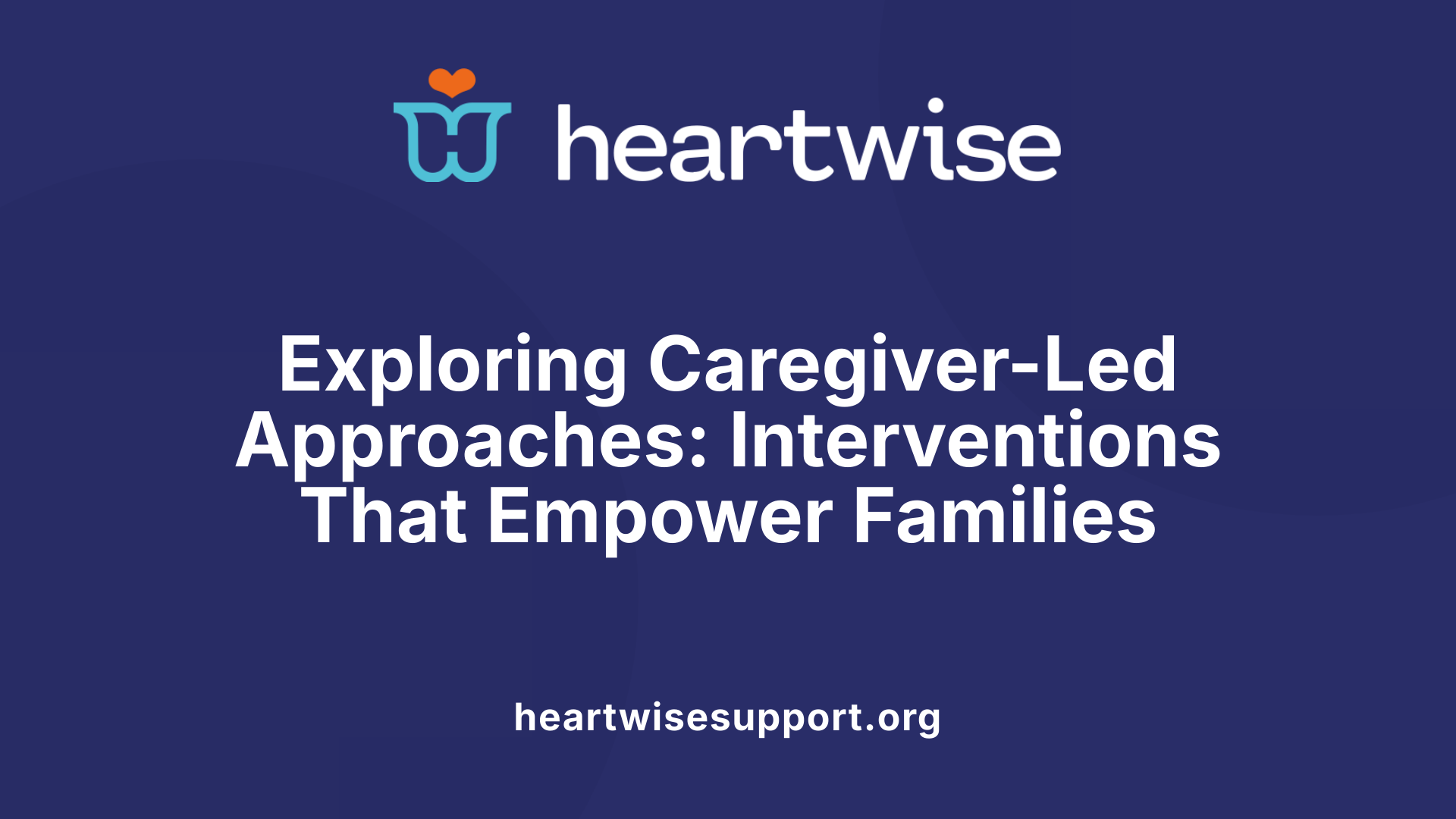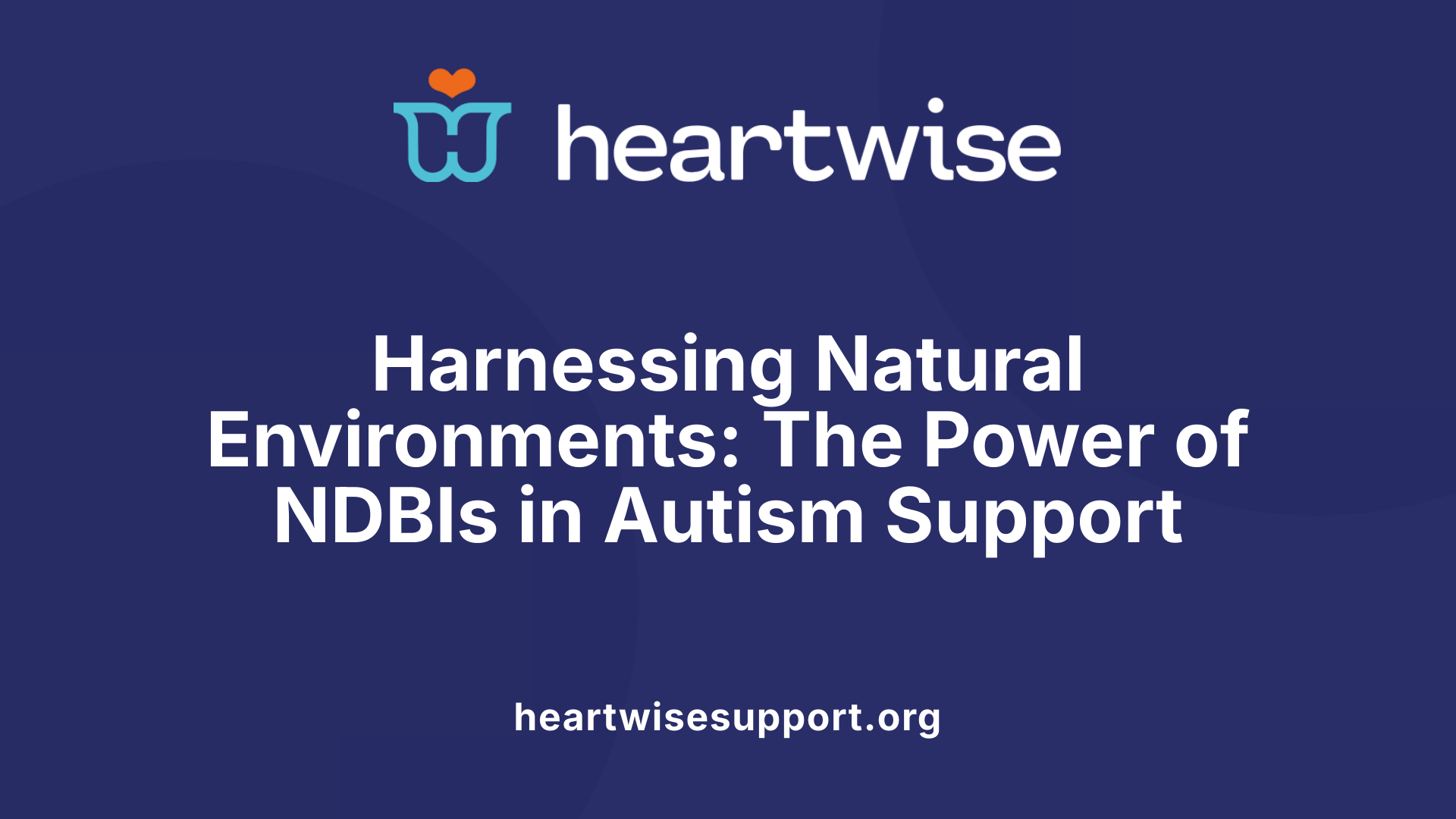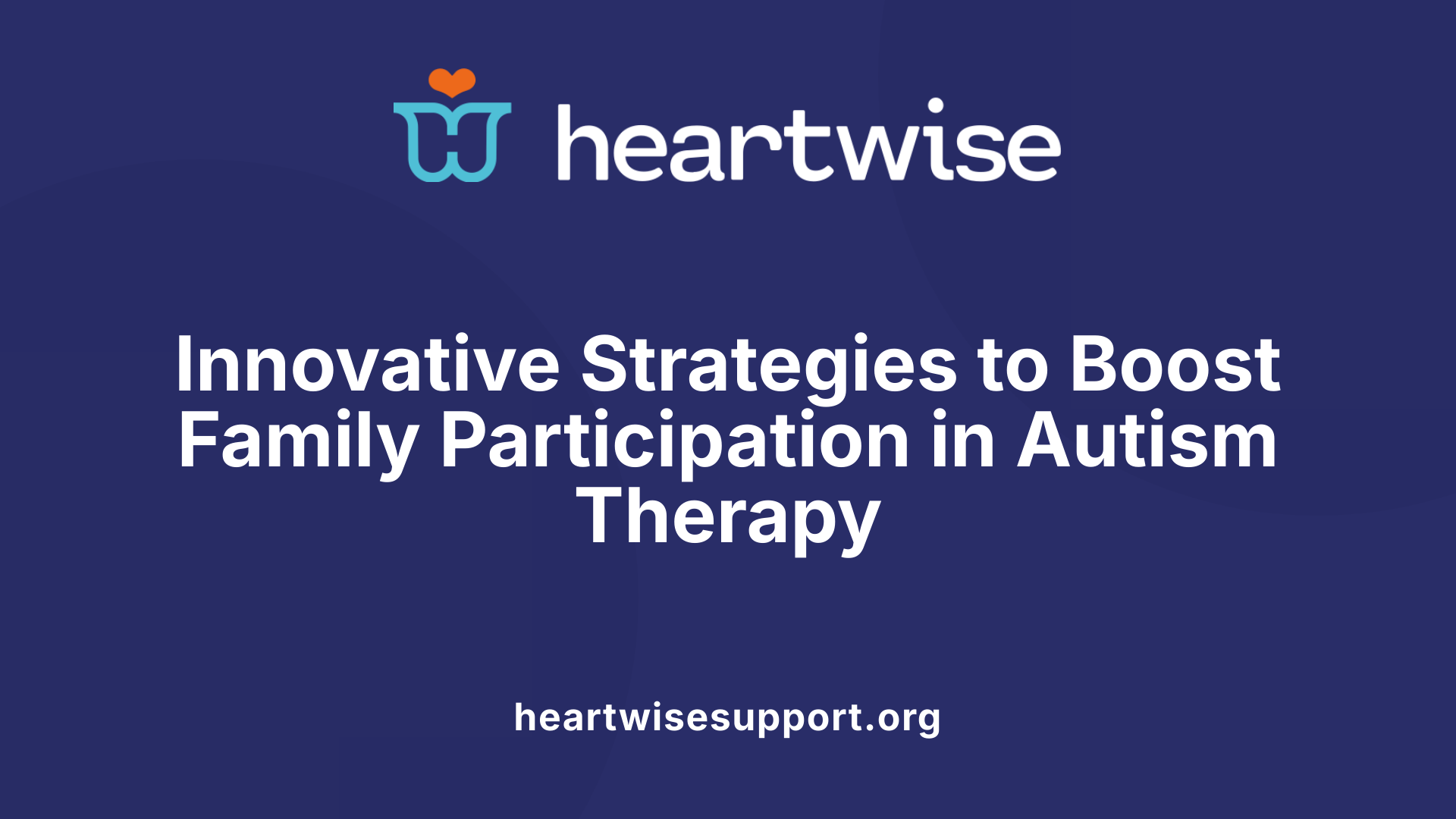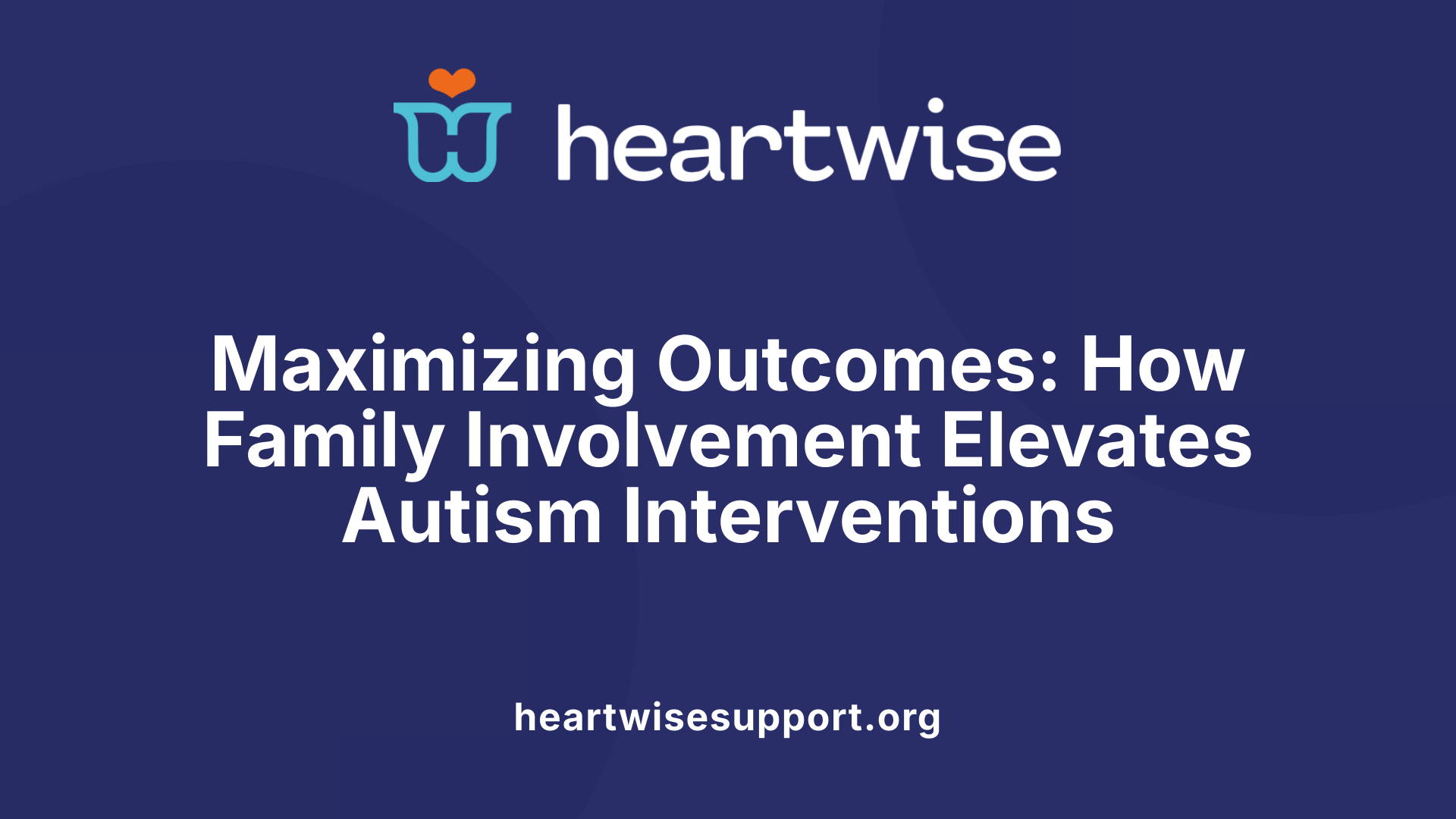Understanding the Crucial Role of Family Engagement in Autism Treatment
Family involvement is a vital factor influencing the success of autism spectrum disorder (ASD) interventions. The active participation of caregivers not only enhances skill acquisition for children but also supports parental well-being and promotes sustained developmental progress. This article explores how family engagement impacts therapy outcomes, strategies for fostering active involvement, and the evidence supporting these approaches.
Types of Family-Mediated Interventions in Autism Therapy

What are caregiver-mediated interventions targeting core ASD features like social interaction and communication?
Caregiver-mediated interventions focus on empowering parents and caregivers to target the fundamental aspects of autism spectrum disorder (ASD), especially social interaction and communication skills. These programs teach caregivers how to implement strategies that improve a child's ability to engage socially, respond to social cues, and develop effective communication. Naturalistic developmental behavioral interventions (NDBIs), such as the Early Start Denver Model and Pivotal Response Treatment, exemplify this approach. They incorporate everyday activities and child-preferred routines into their framework, fostering natural learning environments that are rooted in developmental science and behavioral principles.
In early childhood, parental involvement is particularly crucial. During infancy and toddlerhood, caregivers help mediate play and routines, which are essential for fostering social engagement and joint attention. Evidence from systematic reviews indicates that involving families in interventions enhances caregiver skills while simultaneously improving children’s social interaction and communication behaviors. Effectively, these approaches use family involvement to facilitate skill generalization across settings, boosting developmental progress.
What are caregiver training interventions focusing on behavioral techniques for reducing maladaptive behaviors?
Caregiver training interventions aim to teach behavioral techniques that help reduce problematic or maladaptive behaviors often observed in children with ASD. These programs train parents in positive behavior support, reinforcement strategies, and functional behavior assessments, enabling them to implement consistent behavioral plans at home. The goal is to decrease challenging behaviors such as tantrums, aggression, and self-injury, which impede learning and socialization.
Research shows that caregiver training interventions like Project ImPACT and JASPER significantly boost parent adherence to intervention protocols. This consistency leads to better outcomes, including reductions in maladaptive behaviors and improvements in social and communication skills. Parent-implemented approaches foster a supportive environment and promote the development of adaptive skills—enabling children to better participate in daily routines and social interactions.
How does family involvement influence the success of autism-focused therapies?
Family involvement plays a central role in the success and effectiveness of autism therapies. When families actively participate in intervention programs, they reinforce learned skills outside the clinical setting, promoting their generalization into everyday life. Engaged parents are better equipped to monitor progress, provide immediate feedback, and adjust implementation strategies, which leads to more tailored and responsive interventions.
Research, including a comprehensive meta-analysis of 51 randomized controlled trials involving nearly 2,900 children with ASD, highlights that parent-implemented interventions have a moderate to large benefit (effect size ~0.55). These improvements manifest in various areas, such as social behavior, communication, and reduction of maladaptive behaviors. Notably, parent ratings of progress align with professional assessments, validating their role in outcome measurement.
Family participation also enhances the emotional bond between parents and children, increases motivation, and strengthens parental confidence in managing ASD-related challenges. Interventions like the Early Start Denver Model and JASPER are particularly effective when families are involved, demonstrating improved child outcomes and increased parental satisfaction.
What is the role of family involvement in autism therapy outcomes?
Family involvement is vital in shaping positive therapy outcomes for children with autism. Caregivers serve as consistent implementers of intervention strategies, which enhances skill acquisition and generalization across various environments. Their active participation boosts behavior support, fosters emotional well-being, and creates a nurturing, structured environment conducive to learning.
Programs like Project ImPACT and JASPER demonstrate that parental training and involvement lead to significant improvements in social and communication skills. Such involvement not only helps in reducing negative behaviors but also increases the overall intensity and consistency of intervention, contributing to sustained developmental gains.
Additionally, actively engaged families better understand their child's needs, adapt strategies appropriately, and advocate for tailored services, leading to more personalized and effective intervention plans. Overall, incorporating families into therapy processes fosters a collaborative atmosphere that amplifies the benefits of treatment, ultimately supporting more meaningful growth and long-term success.
How does research support family engagement in autism therapy?
Substantial research underscores the importance of family engagement in improving autism therapy outcomes. Evidence from systematic reviews and meta-analyses confirms that parent-implemented and family-mediated interventions significantly enhance social, communicative, and behavioral skills in children with ASD.
Studies have shown that when families are trained and actively involved, there is a marked increase in positive behaviors and a decrease in maladaptive responses. This is particularly true for early intervention programs that integrate naturalistic approaches, such as NDBIs, which capitalize on routine activities and family routines to reinforce learning.
Furthermore, the use of telehealth and online resources has broadened access to training, making family participation feasible for diverse populations and reducing barriers related to geography or scheduling. Consequently, engaging families in therapy is not only supported by empirical evidence but also recognized as an essential component in creating effective, sustainable treatment plans.
The Significance of Naturalistic Developmental Behavioral Interventions (NDBIs)
 Naturalistic developmental behavioral interventions (NDBIs) are a group of empirically supported approaches designed to promote learning in children with autism spectrum disorder (ASD). These interventions are characterized by their delivery in natural settings, such as the home or community, where they incorporate child-preferred activities to increase engagement and motivation.
Naturalistic developmental behavioral interventions (NDBIs) are a group of empirically supported approaches designed to promote learning in children with autism spectrum disorder (ASD). These interventions are characterized by their delivery in natural settings, such as the home or community, where they incorporate child-preferred activities to increase engagement and motivation.
NDBIs are informed by developmental science and apply behavioral principles to facilitate learning within everyday routines and activities. This approach not only makes therapy more accessible and relevant but also supports the generalization of skills across different contexts.
What is the role of family involvement in autism therapy outcomes?
Family involvement is fundamental to the success of autism interventions, especially NDBIs. Caregivers—parents and other family members—are integral to mediating and implementing intervention strategies at home and in daily routines. Their active participation helps create a consistent therapeutic environment, reinforcing skills learned during formal sessions.
Research has shown that when parents are involved in interventions like Project ImPACT and JASPER, there are notable improvements in children's social and communication abilities. These parent-implemented programs not only boost child development but also increase parent adherence to treatment plans, reduce parental stress, and enhance overall family well-being.
In naturalistic interventions, family engagement ensures that strategies are embedded in the child's natural contexts, which promotes skill generalization beyond therapy sessions. Including family members, particularly during infancy and toddlerhood, is crucial for mediating play and routines, which are vital components for early development.
Moreover, active family participation fosters a supportive environment that nurtures emotional bonds and increases the child's motivation to learn. Using accessible methods like telehealth expands the reach of parent training, especially benefiting families in underserved areas.
Meta-analyses and systematic reviews reinforce these findings, demonstrating moderate to large effects of parent-involved interventions on social, behavioral, and communication outcomes. Such engagement also empowers parents, giving them ownership and confidence in supporting their child's development.
In summary, family involvement in NDBIs enhances intervention efficacy by ensuring consistent application of strategies in everyday life, promoting generalization of skills, and strengthening parent-child relationships. This collaborative approach redefines traditional therapy paradigms and emphasizes the pivotal role families play in shaping positive developmental trajectories for children with ASD.
Enhancing Family Engagement through Technology and Support Strategies

What are some strategies for enhancing family involvement in autism treatment?
Improving family participation in autism care involves several practical approaches tailored to meet individual family needs. One effective strategy is actively engaging caregivers through customized training programs, resources, and open communication channels that prioritize their concerns and goals. This fosters a collaborative environment where families feel supported and empowered.
Incorporating caregiver-mediated interventions, such as Pivotal Response Treatment (PRT) and the Early Start Denver Model (ESDM), encourages parents to practice intervention techniques within natural routines. Such approaches promote skill generalization and help integrate therapy into everyday life.
Utilizing technology plays a vital role in expanding access and flexibility. Telehealth sessions, mobile apps, and online modules allow families to participate in treatment regardless of location or busy schedules. These digital tools facilitate ongoing support and help reinforce skills at home.
Addressing caregiver stress is equally important. Implementing mindfulness programs, peer support groups, and offering flexible service options can reduce burnout and maintain caregiver engagement. Building strong relationships through consistent feedback, celebrating progress, and respecting family input creates a foundation of trust that sustains long-term involvement.
Effective strategies, therefore, combine personalized support, technological convenience, and emotional care to optimize family engagement and ensure effective autism intervention.
How does family participation influence the effectiveness of autism therapies?
Family involvement significantly boosts the success of autism treatments by ensuring consistency and promoting generalization of skills across different environments such as home, school, and community. When parents and caregivers actively participate, they reinforce therapy techniques learned during sessions, which accelerates skill acquisition in areas like social interaction, communication, and behavior.
Monitoring progress with family members enables timely adjustments to intervention plans, leading to more tailored and effective support. Moreover, active participation nurtures a positive and motivating atmosphere for the child, increasing enthusiasm and emotional engagement with therapy.
Furthermore, family involvement fosters a supportive context that helps children develop better coping mechanisms and social skills. This shared effort not only benefits the child's developmental trajectory but also strengthens parent-child relationships and emotional bonds, leading to improved overall well-being.
While caregiver stress and family dynamics can sometimes challenge intervention efforts, overall, engaging families leads to more sustained and meaningful improvements in autistic children's outcomes. The partnership between families and professionals remains a cornerstone of effective autism treatment.
Technologies and support strategies for increasing family engagement
| Strategy | Description | Benefits |
|---|---|---|
| Telehealth and Online Modules | Virtual sessions and e-learning resources accessible from home | Increased accessibility, convenience, tailored support |
| Mobile Apps and Digital Tools | Interactive applications that teach and reinforce intervention techniques | Continuous engagement, skill practice outside sessions |
| Support Programs and Mindfulness | Community-based support, stress reduction activities for caregivers | Reduced caregiver stress, sustained participation |
| Feedback and Progress Sharing | Regular updates, positive reinforcement, collaborative goal setting | Trust building, motivation, personalized adjustments |
Research consistently underscores the importance of integrating technological solutions and supportive services. These advancements not only broaden access to interventions but also help maintain caregiver wellbeing, directly impacting the child's development.
Emphasizing open communication, feedback, and shared decision-making further strengthens the caregiver-therapist relationship. When families feel valued and supported, their active role becomes a vital element in achieving positive therapeutic outcomes.
With innovative tools and empathetic support strategies, family engagement in autism treatment becomes more effective and sustainable, ultimately leading to a higher quality of life for children and their families.
The Benefits of Family Engagement in Improving Therapy Results

How does family engagement support shaping new therapy paradigms?
In recent years, involving family members in autism therapy has transformed traditional treatment approaches. Engaged families are now viewed as essential partners in designing and implementing intervention strategies. Their active participation helps tailor therapies to fit individual child needs, ensuring that interventions are more relevant and adaptable to everyday life. This shift fosters the development of innovative, family-centered models like DIR/Floortime and expands the role of parents from passive recipients to active co-contributors. As a result, family involvement not only enhances the relevance of therapies but also drives the evolution of autism treatment paradigms.
How does family involvement foster emotional support and strengthen parent-child bonds?
Engaging parents in autism intervention creates a supportive environment that benefits both child and parent emotionally. Parental participation during therapy sessions reinforces positive interactions, nurturing trust and emotional closeness. Consistent involvement allows parents to better understand their child's unique needs, fostering patience and empathy. This heightened understanding and shared effort often lead to stronger parent-child bonds, which are critical for the child's emotional stability and development.
Moreover, family involvement extends beyond the therapy room. When parents are actively engaged, they are better equipped to provide ongoing support at home, contributing to improved emotional regulation and resilience in children. This collaborative effort enriches the parent-child relationship and promotes a nurturing environment conducive to growth.
How does family engagement enhance the generalization of skills across settings?
One of the major challenges in autism treatment is ensuring that learned skills transfer from therapy to everyday environments like home, school, and community. Family involvement is crucial here, as it provides opportunities for children to practice skills in diverse real-world contexts.
Parents trained in behavioral techniques and intervention strategies can reinforce these skills throughout daily routines, making progress more consistent and durable. For example, incorporating therapy techniques during play, routines, and social interactions at home solidifies social communication and adaptive behaviors. Studies show that when families participate actively, children demonstrate better generalization of skills, which leads to meaningful, lasting improvements.
Furthermore, family engagement creates a consistent environment that supports therapy goals. It allows for immediate feedback and adjustments based on real-life experiences, enhancing the effectiveness of interventions.
Summarizing the Power of Active Family Participation
The evidence clearly underscores that family involvement is a linchpin in achieving successful autism therapy outcomes. From naturalistic interventions to parent-implemented strategies, engaging families in treatment plans enhances skill development, encourages generalization across various environments, and fosters emotional bonds. Utilizing modern tools like telehealth and online resources further amplifies the reach and effectiveness of family-centered approaches. Ultimately, empowering families not only supports children’s developmental progress but also contributes positively to parental well-being, enabling a holistic and sustainable approach to autism intervention.
References
- Advances in Supporting Parents in Interventions for Autism ...
- Parents' Involvement in ASD Treatment: What Is Their Role?
- Effects of Parent-Implemented Interventions on Outcomes of ...
- Enhancing Autism Therapy: The Impact of Family Involvement
- The Impact of Family Involvement in ABA Therapy
- Parent Involvement in Mental Health Treatment for Autistic Children
- The effects of early autism intervention on parents and family ...
- Parents' Involvement in ASD Treatment: What Is Their Role?











